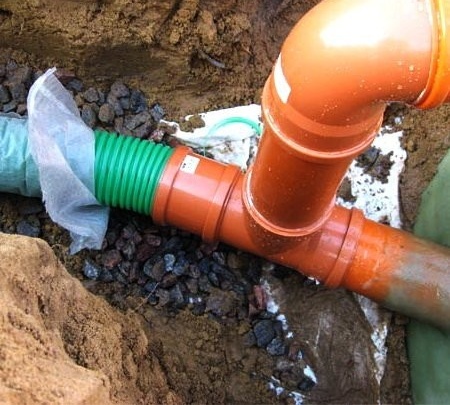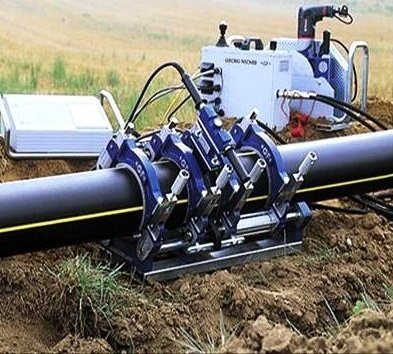Sealing sewer pipes: how and how to properly seal the connection?
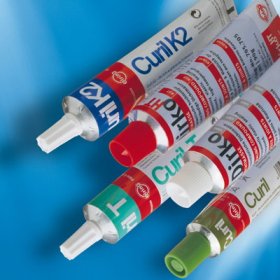
To prevent leaks in sewer systems, even at the construction stage, careful sealing of the joints of the pipeline elements is provided. For its implementation, it is necessary to use one of the sealants specifically designed for sewer pipes. It is chosen depending on the materials used, the installation method and the preferences of the installer performing work on the construction of the sewer system. In this article, you can find out which sealant for sewer pipes is best used and how to properly carry out this very seal.
The importance of sealing sewer systems
All pipes need to be sealed, especially those that are laid underground. This process should be taken seriously to do everything at once and for a long time. After all, if the defects in the external finish can be easily fixed, then to re-seal the expansion joints of the pipes buried in the ground, a considerable amount of work will be required, almost the same as when the system was rebuilt.
At the same time, it is important to prevent leakage both from inside the sewer pipes and into the pipeline (for example, groundwater) so that the operation of the sewage discharge system as a whole is not disturbed. For different types of sewer systems, certain types of sealant are used.
Types of sealants and their application
The most common materials for sealing, which ensure high-quality work with the components of the sewer system, are tapes, silicone materials, technical sulfur, Portland cement mortar, epoxy resin, resin strand, asphalt bitumen, etc. When using each of them, it is necessary to observe a certain technology in order to achieve required quality.
Option # 1 - self-adhesive tapes
Among modern materials for sealing, special tapes with anticorrosive properties are widely used. They are used to seal the connection area of pipes of different types, to protect the insets, plugs, bends, turning angles and other elements of the sewer system.
The composition of such a tape includes a copper or aluminum layer, its base is bitumen-rubber. The protective film is removed during installation. Self-adhesive tape sealant is easy to use, but very effective, has strength and durability. It not only seals, but also provides comprehensive protection for pipes, including anti-corrosion and dielectric.
Sealing of sewer pipes with a tape is carried out in the following order:
- before applying the tape, the surface is cleaned of dust and dried;
- in order to avoid wrinkles and folds, the tape is kept stretched during winding;
- the tape is spirally overlapped by 50%, so the entire insulated surface will be covered with 2 layers of film.
It's important to know! Sealing tapes do not tolerate direct exposure to ultraviolet radiation, therefore, the sealed sections of sewer pipes located in the open sun must be wrapped with additional protective material.
Option # 2 - Silicone Sealing Materials
The basis of such sealants is silicone rubber. The composition of silicone sealants is a complex mixture of various substances that provide reliable quality sealing. They are characterized by a high degree of adhesion to surfaces, and without their preliminary treatment with primers.
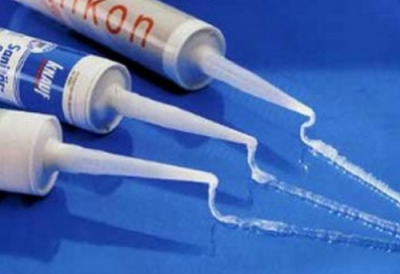
A distinctive feature of silicone sealants is a high degree of adhesion to surfaces that do not need to be further treated.
Depending on the type of hardener, silicone sealant can be of two types:
- Acid. It has a relatively low cost, but is not suitable for application to surfaces that are able to interact with acids.
- Neutral. Such a sealant is considered more versatile and is suitable for all surfaces.
Using silicone sealants insulate the joints of metal and plastic pipes. With the participation of moisture in the air, the silicone sealant cures. Silicone paste turns after vulcanization into a substance similar to rubber.
Other sealing materials
In addition to the above most common materials, there are other means of sealing sewer pipes, such as:
- Portland cement. This material is part of asbestos-cement and cement mixtures, which are used in the installation of elements of a cast-iron sewer system (chasing bell-shaped joints).
- Oil bitumen, asphalt mastic - are used to prepare the fill, with which the joints of ceramic pipelines are sealed.
- Epoxy resin is a common means of sealing sewer pipe joints at home.
- Technical sulfur. It is mainly used for sealing joints of cast-iron sewer pipes. Pre-sulfur is crushed, then heated to melting and poured into the joint hole.
Resin strand, jute, hemp rope. The scope of their application is the sealing of sockets of cast-iron and ceramic sewer pipes. The most effective is the combination of resin-impregnated rope.
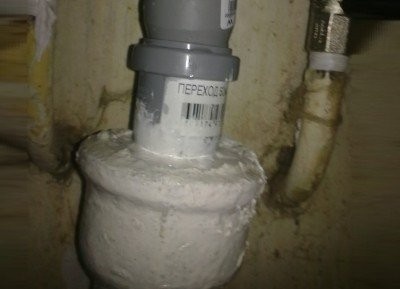
To seal the joints of the sewer pipeline, especially when caulking the bell-shaped joints of cast-iron pipes, mixtures are often used, the component of which is Portland cement
One of the oldest and easiest methods of sealing should not be discounted - sealing joints cracks with paint. And although this method is used less and less, it gives good results on any type of sewer pipe. The bell is hammered with a cloth, then paint is poured there. The contents of the bell are rammed with a screwdriver or wire and left to solidify. For this purpose, acrylic, epoxy and polyurethane paints are recommended for use, since these types of paints are characterized by high water resistance.
We offer you to watch a video with an example of sealing an external cast-iron sewer pipe using a cab (resin strand):
The choice of method and material for sealing sewer pipes is not of great importance, since all the tools described above provide a high degree of tightness. Of course, the decision to use one or another sealant for sewer pipes will depend on the location of the sewer system and on the material of the sewer.But the decisive factor in the sealing process is its competent conduct, which will guarantee the absence of leaks in the sewer system for many years.

